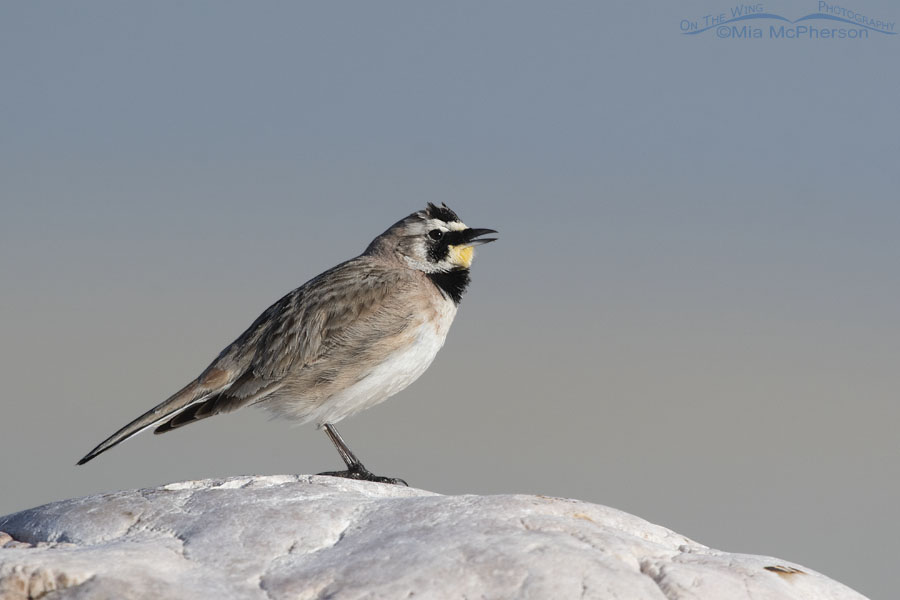 Singing Horned Lark and the Great Salt Lake – Nikon D500, f7.1, 1/3200, ISO 500, Nikkor 500mm VR with 1.4x TC, natural light
Singing Horned Lark and the Great Salt Lake – Nikon D500, f7.1, 1/3200, ISO 500, Nikkor 500mm VR with 1.4x TC, natural light
Horned Larks are year round residents in northern Utah so there are times that I am puzzled when I see people who are in the field often say as late as February or March that they have seen their first of year Horned Larks. The reason I am puzzled is because I see these larks in the highest abundance here during December through February when they form large flocks that number in the hundreds that fly over and forage on snow covered flats, parking areas, roadsides, pastures, agricultural fields, foothills, deserts and areas with bare ground. Usually their flight calls clue me in on their presence and my eyes follow my ears to locate them.
The time of year I see them in the lowest numbers is when they are raising their young which is most likely because they and their young can blend into their habitat very easily.
From February through May I typically see lots of males singing from the tops of rocks, boulders, shrubs, stumps and from the ground to attract the females. Horned Larks can start breeding as early as February and can have multiple broods per season so the males are more visible as they seek to find mates to breed with.
I was thrilled to photograph this singing male Horned Lark last week because he was high up on a boulder with the Great Salt Lake below and behind him since I don’t have many images of this species with the lake in the background. I hope he found a mate.
Life is good.
Mia
Click here to see more of my Horned Lark photos plus facts and information about this species.


Hope he found a mate as well. Thank you for including the vocalization links — interesting that one is from Poland.